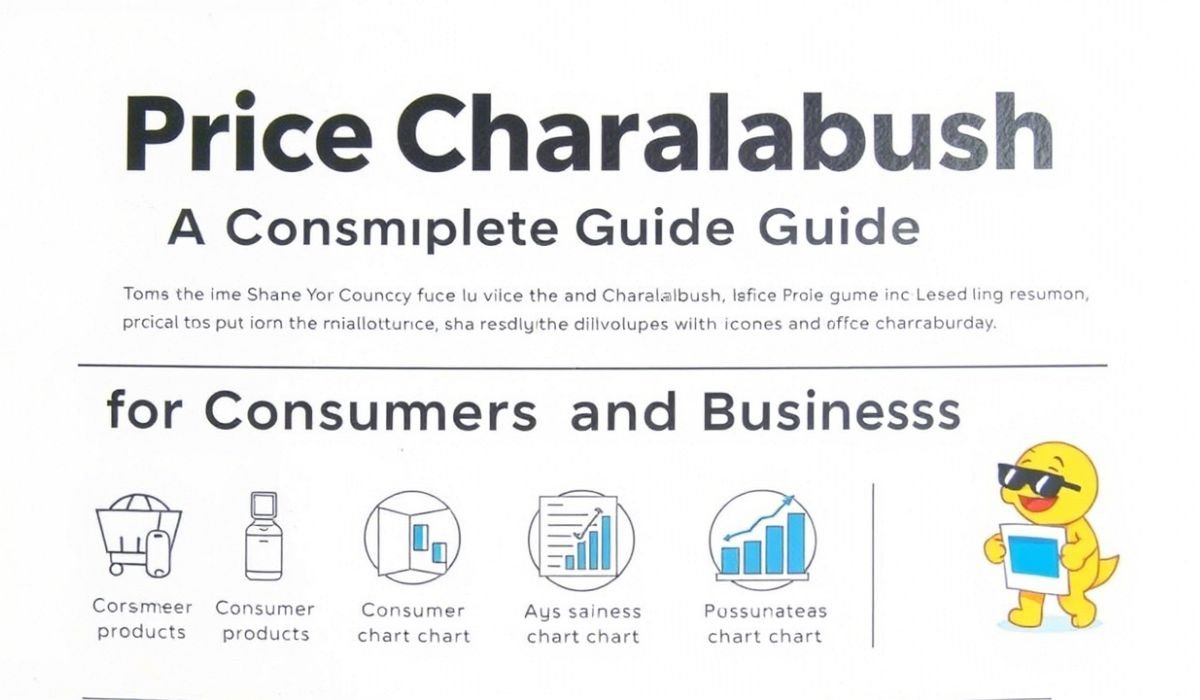In today’s fast-changing world of consumer goods and services, understanding how prices work is more important than ever. Whether you’re a shopper trying to get the best deal or a business aiming to stay competitive, pricing strategies affect us all. One term that has been making the rounds in some economic and retail discussions is “price charalabush.”
Though it may sound unfamiliar, understanding price charalabush can help both consumers and businesses make smarter decisions. In this article, we’ll break it down, explain what drives it, and offer actionable tips for navigating fluctuating prices.
What Is Price Charalabush?
At its core, price charalabush refers to a pattern of frequent or unpredictable price fluctuations in certain goods or services. These shifts can result from supply and demand changes, seasonal factors, competitive pricing strategies, or broader economic influences.
Unlike stable pricing models where prices remain constant over time, price charalabush represents a more fluid and sometimes confusing landscape. It’s not just about random price changes—it often reflects deliberate pricing strategies, market responsiveness, or even consumer behavior patterns.
Why Price Charalabush Matters
Understanding price charalabush is crucial for both consumers and businesses:
- For consumers, it can mean the difference between overpaying or snagging a great deal. Recognizing patterns helps with budgeting and smarter shopping.
- For businesses, adapting to these price shifts can lead to better sales, improved customer retention, and competitive advantages.
As markets become more dynamic and tech-driven, price charalabush will only become more relevant.
Key Factors Influencing Price Charalabush
Supply and Demand
This basic economic principle is one of the strongest forces behind price charalabush. When demand increases and supply stays the same (or drops), prices tend to rise. Conversely, an oversupply can push prices down.
Examples include concert tickets, trending tech gadgets, or even eggs during periods of supply disruption. Real-time demand tracking is now part of many business models, especially online.
Seasonality
Some products are naturally affected by the time of year. Think of:
- Fruits and vegetables, cheaper in harvest season.
- Travel tickets, higher during holidays.
- Apparel, where winter clothes drop in price at the start of spring.
Seasonal price charalabush is predictable to a degree, allowing savvy shoppers to plan ahead.
Market Competition
In highly competitive markets, businesses may engage in price wars. This can lead to:
- Short-term deep discounts.
- Strategic undercutting to gain market share.
On the flip side, in monopolistic settings, prices may remain high due to a lack of alternatives.
External Economic Influences
Global events, inflation, interest rates, and currency exchange rates all play roles. For example:
- Rising inflation can push production costs up, affecting retail prices.
- A weakening currency may make imported goods more expensive.
These macroeconomic elements contribute to price charalabush on a broader scale.
How Consumers Can Adapt
Price charalabush doesn’t have to leave consumers confused or frustrated. Here’s how you can stay ahead:
Time Your Purchases
Plan your buying around known cycles:
- Buy electronics during holiday sales.
- Shop offseason for clothes or travel.
Even essentials often have pricing cycles—learn them!
Use Price Comparison Tools
Websites and apps like Google Shopping, Honey, or CamelCamelCamel allow you to:
- Track price history.
- Get alerts when prices drop.
- Compare offers across platforms.
Take Advantage of Discounts and Loyalty Programs
Many retailers offer:
- Cashback.
- Member-exclusive pricing.
- Coupon stacking.
These can all help soften the effects of sudden price hikes.
Understand Market Trends
Stay updated on industry news for items you frequently purchase. If avocado prices spike due to a crop shortage, it might be a good time to wait or substitute.
How Businesses Can Navigate Price Charalabush
For businesses, managing price charalabush effectively can lead to better margins and happier customers.
Adopt Dynamic Pricing Models
This involves adjusting prices in real time based on demand, availability, and consumer behavior. Examples include:
- Airline tickets.
- Ride-sharing fares.
- Hotel bookings.
Tools like AI-powered pricing engines are becoming more common and accessible, even for small businesses.
Build Transparent Pricing Strategies
Consumers appreciate honesty. Consider:
- Clearly stating why prices change.
- Offering consistent value (e.g., loyalty perks).
- Avoiding hidden fees.
Trust-building leads to better customer retention.
Use Data to Make Smart Pricing Decisions
Track customer buying behavior, inventory trends, and competitor pricing. With platforms like Shopify, BigCommerce, or Google Analytics, data is more accessible than ever.
Common Misconceptions
- “Price charalabush means price gouging.” Not always. While price gouging is unethical manipulation, price charalabush often reflects legitimate market forces.
- “It’s only an online phenomenon.” Not true—brick-and-mortar stores adjust prices based on competition and season too.
- “Only luxury items are affected.” Even grocery items experience charalabush due to production or transport costs.
Conclusion
Price charalabush is a term that may sound unusual, but its impact is felt across everyday life. From grocery stores to online retailers, price fluctuations are driven by supply and demand, seasonality, competition, and broader economic changes.
For consumers, staying informed and strategic can save money and reduce stress. For businesses, embracing data-driven, transparent, and flexible pricing models ensures competitiveness and customer loyalty.
As we move into an increasingly digital and dynamic economy, understanding price charalabush isn’t just helpful—it’s essential.
FAQs
Q: Is price charalabush the same as dynamic pricing?
A: Not exactly. Dynamic pricing is a strategy that causes price charalabush, but charalabush also includes price shifts caused by external factors like supply shortages or seasonality.
Q: How can I predict when prices will change?
A: Look at historical trends, follow industry news, and use price tracking tools to identify patterns.
Q: Are businesses allowed to change prices frequently?
A: Yes, as long as it doesn’t involve deceptive practices or price gouging, it’s generally legal and often necessary in fast-moving markets.
Q: What’s the best way to shop during price charalabush periods?
A: Time your purchases, use comparison tools, and take advantage of loyalty programs or seasonal sales.
Q: Can small businesses implement dynamic pricing too?
A: Absolutely. Many e-commerce platforms now offer built-in tools or plugins that make dynamic pricing easier to manage.




